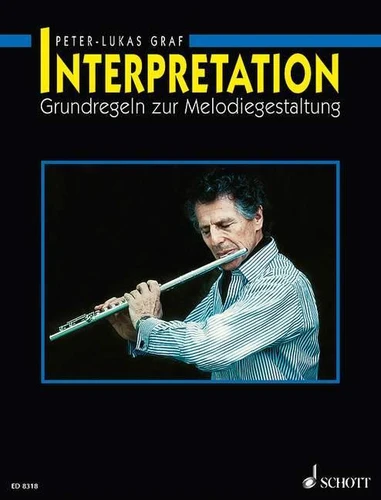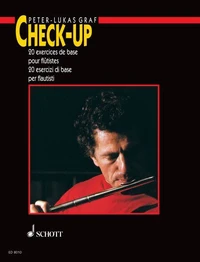Interpretation. Grundregeln zur Melodiegestaltung. flute.
Par :Formats :
- Paiement en ligne :
- Livraison à domicile ou en point Mondial Relay indisponible
- Retrait Click and Collect en magasin gratuit
- Réservation en ligne avec paiement en magasin :
- Indisponible pour réserver et payer en magasin
- Nombre de pages128
- Poids0.463 kg
- Dimensions23,1 cm × 30,3 cm × 0,0 cm
- ISBNM-001-08465-8
- EAN9790001084659
- Date de parution01/01/1996
- CollectionFLUTE TRAVERSIE
- ÉditeurSchott
Résumé
Musical interpretation is first and foremost a question of shaping a melody or the melodic line of a setting. Music, like any language, follows its own set of rules and a sufficient knowledge and familiarity with musical 'grammar' is therefore an essential prerequisite of any convincing interpretation. The internationally renowned performer and teacher Peter-Lukas Graf explains in great detail the parameters that have to be taken into account for a successful interpretation : rhythm, metre, agogics, articulation, phrasing, ornamentation and implied polyphony, etc.
Numerous examples from the flute repertoire of the 17th-20th century serve as models from which he derives the 'rules' appropriate for an interpretation in keeping with each period. - These rules are not intended to be dogmatic but instead should stimulate the players to form their own opinion. Revised new edition 2013. Instrumentation : flute
Numerous examples from the flute repertoire of the 17th-20th century serve as models from which he derives the 'rules' appropriate for an interpretation in keeping with each period. - These rules are not intended to be dogmatic but instead should stimulate the players to form their own opinion. Revised new edition 2013. Instrumentation : flute
Musical interpretation is first and foremost a question of shaping a melody or the melodic line of a setting. Music, like any language, follows its own set of rules and a sufficient knowledge and familiarity with musical 'grammar' is therefore an essential prerequisite of any convincing interpretation. The internationally renowned performer and teacher Peter-Lukas Graf explains in great detail the parameters that have to be taken into account for a successful interpretation : rhythm, metre, agogics, articulation, phrasing, ornamentation and implied polyphony, etc.
Numerous examples from the flute repertoire of the 17th-20th century serve as models from which he derives the 'rules' appropriate for an interpretation in keeping with each period. - These rules are not intended to be dogmatic but instead should stimulate the players to form their own opinion. Revised new edition 2013. Instrumentation : flute
Numerous examples from the flute repertoire of the 17th-20th century serve as models from which he derives the 'rules' appropriate for an interpretation in keeping with each period. - These rules are not intended to be dogmatic but instead should stimulate the players to form their own opinion. Revised new edition 2013. Instrumentation : flute





